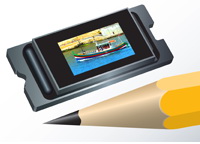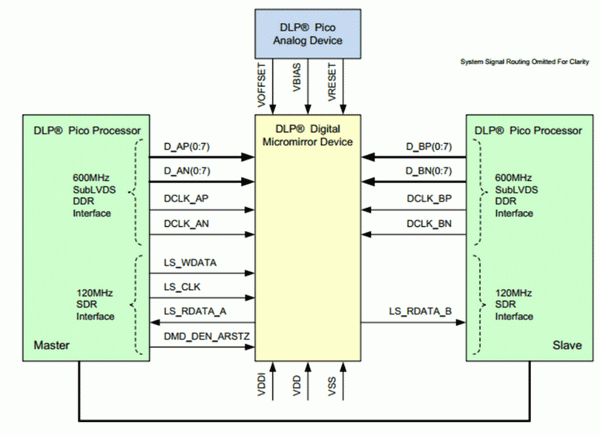Microdisplays – On December 3rd, Texas Instruments (TI) DLP announced that the 0.47” TRP Full-HD 1080p (1920 x 1080) chipset for video and data display applications is sampling to its third-party developer network. This chipset is the smallest TI chipset enabling full-HD projection from compact systems.

TI sees projection applications for the chipset including both mobile projectors and near the eye (NTE) head mounted displays (HMDs). Power consumption of the chipset is low enough for it to be used in battery-powered projection applications. Projection doesn’t just include pico and micro projectors, it includes such applications as automotive and other Head Up Displays (HUDs). The chipset also includes the DLP IntelliBright suite of algorithms and can deliver up to 100% higher brightness or up to 50% lower power consumption than previous DLP Pico chipset architectures.

The TI TRP DLP4710 (pictured left) digital micromirror device incorporates 2,073,600 micromirrors (1080p resolution) within a 0.47” array diagonal. This compares to the DLP4500 which does not have TRP technology and incorporates 1,024,000 micromirrors (WXGA resolution) within a 0.45” array diagonal. Since the optical system for a TRP DLP4710 is different than the optical system for a conventional DLP such as the DLP4500, the DLP4710 cannot simply be substituted for the lower resolution DLP in a projector or other system to upgrade its resolution, even though the chips have almost the same diagonal.
The complete chipset includes not just the DLP4710 DMD itself, but also the DLPC3439 display controller and the DLPA3005 PMIC/LED driver. The DLP4710 is packaged in a FQL (100) package which is 24.50mm x 11mm x 3.80mm.
The DLP 4710 has a 5.4 µm micromirror pitch coupled to a ±17° micromirror tilt (relative to flat surface). The side illumination is said to optimize efficiency and optical engine size. It is this side illumination and the increased tilt angle (older DMDs such as the DLP4500 were ±12°) that make it impossible to substitute the new TRP technology into an older optical path.
Like all DLP micromirror arrays, the DLP4710 is polarization independent. This simplifies the optical system and increases efficiency compared to LCoS microdisplays, the DLP’s main competition in the picoprojector and NTE space. This is especially important in the pico and micro projector space, where efficiency and total lumen output is the primary consideration, often more important than resolution. In the NTE space resolution is normally more important. The higher resolution of LCoS, where pixels can be as small as 4 µm or less, allows small size optical packages with very high resolution. Since relatively modest lumen outputs are needed for NTE and HMD applications, the lower efficiency of LCoS is less of a factor.
In keeping with normal Texas Instruments practice, there is no information available on price or availability of this chipset. Instead, TI says, “To accelerate developers’ ability to bring their innovative products to market, TI maintains the most extensive ecosystem of pico optical engine manufacturers in the industry, eliminating the need for [product] developers to have their own optics expertise. Members of this third-party ecosystem are now developing optical engines that incorporate the 0.47” TRP Full-HD 1080p chipset”. – Matthew Brennesholtz

